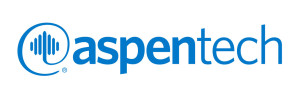
Dr. Steve ZITNEY from U.S. National Energy Technology Laboratory made today a presentation on the Advanced Process Engineering Co-Simulator (APECS).

APECS relies heavily on CAPE-OPEN technology to integrate not only CFD models in a process simulator but also various custom models or reduced-order models. Aspen Plus is the process simulator of choice at NETL and it makes sense to present the achievements of APECS at an Aspen Engineering Suite User Group Meeting.
Steve focused his talk on several applications of APECS for the modelling and simulation of:
- Fuel Cell Auxiliary Power Units (APUs). Since such fuel cells contain many interlinked devices, a complete process simulation is in order. A CFD model of a Solid Oxid Fuel Cell has been developed as a CAPE-OPEN Unit Operation with four material Ports and main parameters as current and voltage.Through a detailed simulation of the APU, it was possible to optimize the system efficiency by varying the fuel cell current.
- Power/Hydrogen Production Plant. An integrated gasification combined cycle (IGCC) uses a high pressure gasifier to turn coal into pressurized gas—synthesis gas (syngas). More than 250 unit operations are present in the process together with a 3D-CFD/Reduced Order Model of an Entrained-Flow Gasifier as well as a 2D-CFD model of a Gas Turbine Combustor.
APECS is considered by CO-LaN as a major success in the application of CAPE-OPEN technology to process simulation. Many CAPE-OPEN Unit Operations have been developed and used including CFD models, Reduced Order Models, Optimizers, etc…
